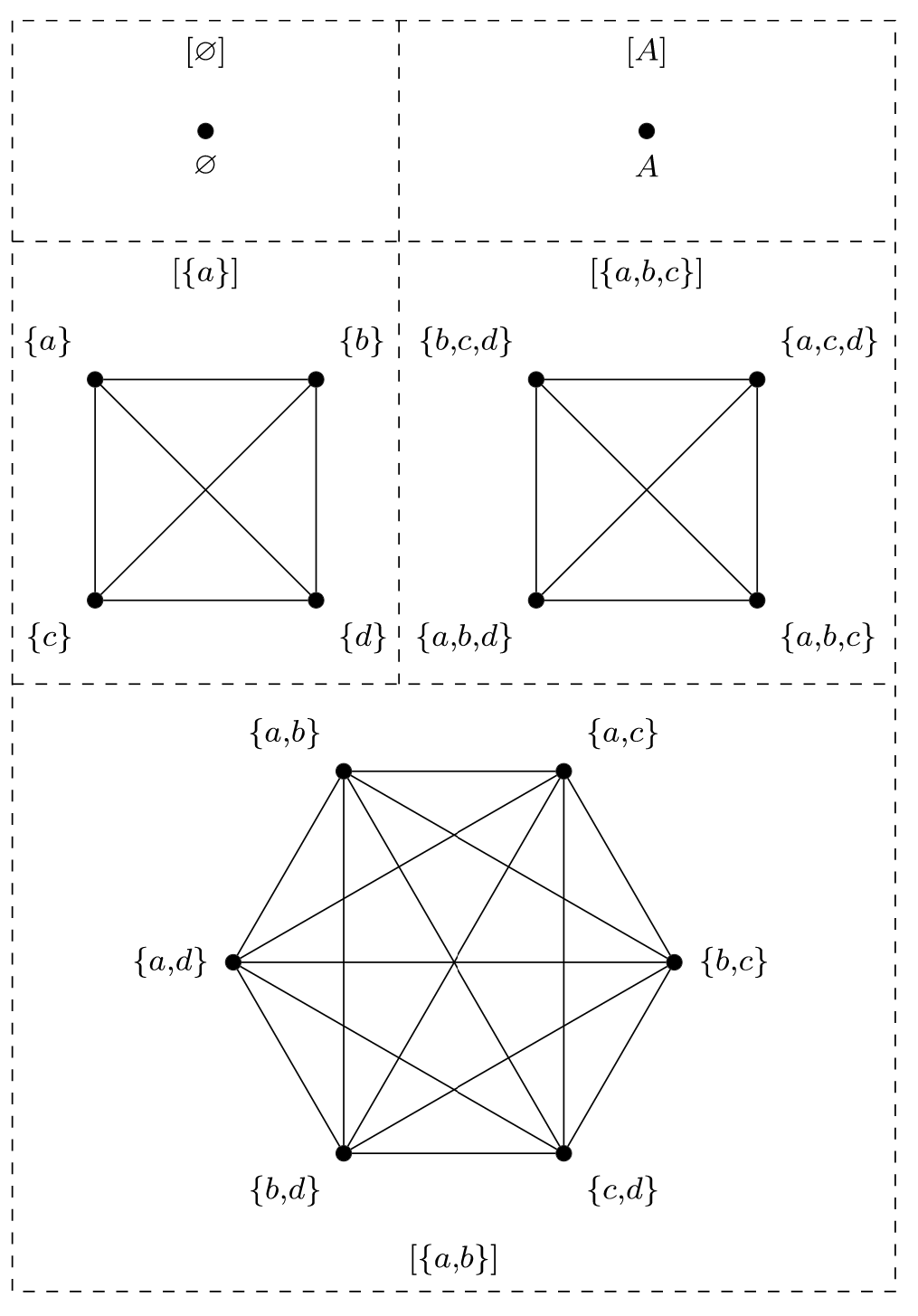18.5: Graph for an equivalence relation
- Page ID
- 93869
Given an equivalence relation on a finite set \(A\text{,}\) what will we observe if we draw the relation's graph?
-
Since an equivalence relation is reflexive, we might as well omit the loops at each node.
-
Since an equivalence relation is symmetric, we might as well replace the pairs of arrows between each related pair of nodes with a single edge, turning the directed graph into an ordinary graph.
-
Since an equivalence relation partitions a set into a disjoint union of equivalence classes (Theorem 18.3.1), the graph of an equivalence relation will be disconnected, with each connected component representing a specific equivalence class.
-
Since each element in an equivalence class is equivalent to every other element in the class (Statement 2 of Proposition 18.3.1), each connected component in the graph will be complete.
Example \(\PageIndex{1}\): Graph of the “same cardinality” equivalence relation.
Let \(A = \{a,b,c,d\}\text{,}\) and let \(\mathord{\equiv}\) be the equivalence relation on \(\mathscr{P}(A)\) defined by \(B \equiv B'\) if \(\vert B \vert = \vert B' \vert \text{.}\) That is, two subsets of \(A\) will be considered equivalent if they contain the same number of elements. Figure \(\PageIndex{1}\) contains the graph for \(\mathord{\equiv}\text{,}\) with reflexive loops and symmetric bidirectional arrows omitted.



